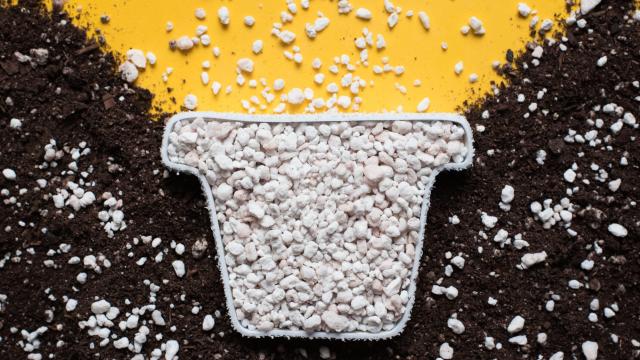Once it’s clear that the houseplant you received as a gift last year has outgrown its pot, it’s time for it to move into a new home (i.e. a bigger pot). You’ll also need to add more soil to ensure the roots have somewhere to go.
And though you can buy pre-mixed potting soil that contains all the components your plant needs to continue to grow, if you have (or end up with) plain compost instead, you may want to consider adding some perlite to that. Here’s what to know.
What is perlite?
If you’ve ever taken a close look at potting soil mixes, you’ve probably noticed what look (and feel) like small, circular pieces of white polystyrene foam. That’s perlite, and those balls aren’t made of foam — they’re made from volcanoes. Technically, it’s expanded volcanic glass that “popped” when it was heated to 1000°C, and increased in size. (Yes, like popcorn.)
But why add volcano popcorn to your soil? To start with, it’s lightweight, sterile, and lasts forever (or at least a long time). It’s also neither alkaline nor acidic, so adding it to soil won’t change the pH. And perhaps most importantly, because perlite is expanded pieces of glass, it is highly porous, so it improves soil drainage and is able to absorb and retain water.
Unfortunately, perlite — which primarily comes from Greece, the United States,, Turkey, and Japan — is a nonrenewable resource, so keep that in mind when using it. Also, while it’s safe and nontoxic, you may want to wear eye protection and a mask if you’re working with perlite on a windy day. Being lightweight makes it easy to transport, but means it can also blow around.
How and when to use perlite
There are multiple ways to use perlite in gardening, and these three are among the most common:
DIY potting soil mix
Because perlite helps with drainage and water retention, it’s a great addition to soil or compost used for houseplants — especially succulents and others that are moisture-sensitive. Before planting anything, mix perlite with compost at a ratio of around 1:4, then plant away.
Propagating cuttings
When propagating plants, put root cuttings in a small jar filled with moistened perlite.
In garden beds
Established garden beds need some TLC too. So every couple of years, it’s a good idea to add a two-inch layer of compost with perlite mixed in, and work it into the top six to 12 inches of soil for a little refresh.

Leave a Reply
You must be logged in to post a comment.